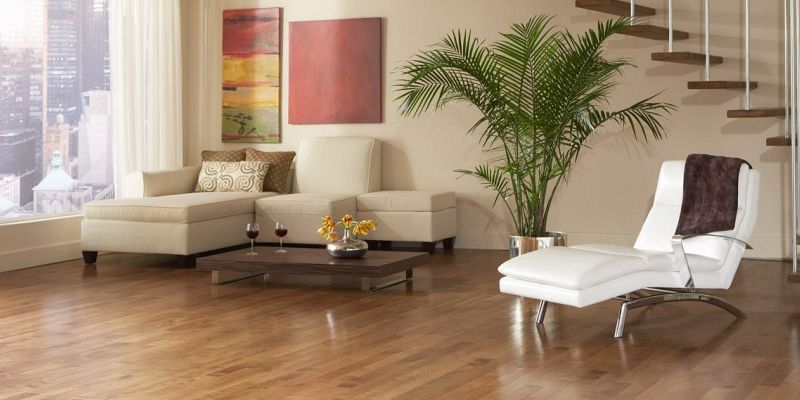1. Versatility
Laminate flooring comes in all shapes, sizes, colours, hues, patterns, and textures. Additionally, it’s gotten very good at simulating, not only hardwood, but a variety of natural stones and ceramic flooring materials.
Laminate flooring is also structurally versatile enough to serve almost any room in the house. It can go in bathrooms and kitchens so long as there’s a moisture barrier to prevent mildew. Additionally, this removes any hassle of removing old flooring if you were doing a renovation.
2. Maintenance
Laminate flooring is often composed of many layers. The top layer is especially resistant to stains and spills making cleaning and maintenance super easy. If you do go to clean it, a quick sweeping or vacuuming to remove superficial dirt and grit should suffice.
3. Installation
Installing laminate flooring is one of the least labour intensive jobs when it comes to installing flooring. Laminate tiles are made with edges that click together so there’s no adhesive required. An entire room of laminate can be placed in just a day or two.
4. Health
Laminate flooring is naturally resistant to the growth of bacteria making it one of the most hypoallergenic forms of flooring. Nor does it trap dust and pollen like a carpet flooring might.
5. Affordable
The process of creating laminate flooring and hardwood flooring often happen in the same facility making the product costs generally cheaper resulting in a cheaper retail price compared to authentic hardwoods and stones.
6. Eco-friendly
Producing laminate flooring is far more sustainable than hardwoods which requires deforestation of many parts of the world and the transportation across continents. Additionally, many manufacturers produce laminate out of recycles wood products providing a lower carbon-footprint.


